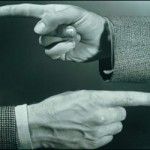
If a copyright owner or other party complaining of infringement fails to fully comply with the elements of notification required by § 512(c)(3) of the the Digital Millennium Copyright Act (DMCA), that notification may not be considered in determining whether the “Hosting” service provider had actual or red flag knowledge of the infringing activity. In order for a notification of claimed infringement to be effective, it must include:
(i) A physical or electronic signature of a person authorized to act on behalf of the owner of an exclusive right that is allegedly infringed.
(ii) Identification of the copyrighted work claimed to have been infringed, or, if multiple copyrighted works at a single online site are covered by a single notification, a representative list of such works at that site.
(iii) Identification of the material that is claimed to be infringing or to be the subject of infringing activity and that is to be removed or access to which is to be disabled, and information reasonably sufficient to permit the service provider to locate the material.
(iv) Information reasonably sufficient to permit the service provider to contact the complaining party, such as an address, telephone number, and, if available, an electronic mail address at which the complaining party may be contacted.
(v) A statement that the complaining party has a good faith belief that use of the material in the manner complained of is not authorized by the copyright owner, its agent, or the law.
(vi) A statement that the information in the notification is accurate, and under penalty of perjury, that the complaining party is authorized to act on behalf of the owner of an exclusive right that is allegedly infringed.
But what if an allegation of infringement is disputed by the posting user? In this case, the posting user may submit a counter-notification requesting restoration of the material at the website. 17 U.S.C. § 512(g)(3) specifies that in order for a counter-notification to be effective, it must include:
(A) A physical or electronic signature of the subscriber.
(B) Identification of the material that has been removed or to which access has been disabled and the location at which the material appeared before it was removed or access to it was disabled.
(C) A statement under penalty of perjury that the subscriber has a good faith belief that the material was removed or disabled as a result of mistake or misidentification of the material to be removed or disabled.
(D) The subscriber’s name, address, and telephone number, and a statement that the subscriber consents to the jurisdiction of Federal District Court for the judicial district in which the address is located, or if the subscriber’s address is outside of the United States, for any judicial district in which the service provider may be found, and that the subscriber will accept service of process from the person who provided notification or an agent of such person.
So what if an OSP receives a notice that fails one or more of the elements required by the DMCA? Although an OSP need only take action on properly completed takedown notices, it may be beneficial for the entity to provide guidance and assistance to those who may want to file such notices. Evidence of proactive assistance would be helpful to a court in demonstrating that the OSP’s notice/counter-notice policy is in fact a good faith, working policy.

